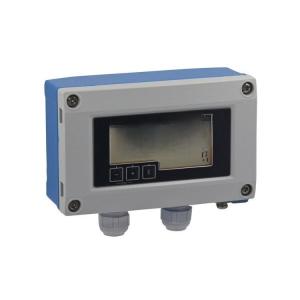What is the RIA15 process indicator?
- The RIA15 is a loop-powered local display (process indicator) designed to show process signals (e.g. 4-20 mA) in the field or on a panel.
- It can also support HART® communication to display additional sensor variables (up to four) when connected to HART-capable devices.
- It is often used where you want a local read-out of an analog loop without needing a full controller or separate power supply.
Key specifications & features
Here are some of the notable technical and functional features of the RIA15:
|
Feature
|
Description
|
|
Input signal
|
1 × analog 4-20 mA (scalable)
|
|
HART support
|
Yes — can act as a primary or secondary HART master, read and display up to 4 HART variables (PV, SV, TV, QV)
|
|
Powering
|
Loop-powered; no separate external power supply required
|
|
Voltage drop in loop
|
≤ 1 V (for standard 4-20 mA mode) / ≤ 1.9 V (if using HART)
|
|
Display
|
5-digit LCD (digit height ~17 mm) + bar graph; backlight option
|
|
Housing / mounting
|
Available in panel mount or field (weatherproof / explosion-proof) versions
|
|
Configuration / operation
|
3 front keys for menu navigation & parameter setting; can be locked via passcode
|
|
Approvals / safety
|
Various certifications (ATEX, IECEx, FM, CSA, etc. depending on version)
|
|
Functional safety (SIL, safety use)
|
Some versions are “LA” type / SIL-certified. The device’s safety function is the faithful transmission of the 4-20 mA signal without distortion; the display is not part of the safety function.
|
How it works / modes of operation
- In its standard analog mode, the RIA15 is inserted into the current loop (4-20 mA) and it measures the current, converts it to the configured engineering units, then displays that value locally.
- In HART mode, the device can poll the sensor via the HART protocol and fetch additional variables (e.g. temperature, pressure, diagnostics) to display.
- It can be either primary or secondary HART master. In a HART loop, typically there is one primary master (e.g. DCS / PLC) and optionally a secondary master (such as the RIA15) for local diagnostics
- The display can alternate among different HART variables based on configuration (e.g. PV → SV → TV → QV).
Use cases & advantages
- Local readout: Offers a way to visualize the loop’s process value right where the measurement is, without needing a full controller or remote display.
- Low voltage drop: Because it introduces very little voltage drop (≤ 1 V or ≤ 1.9 V in HART mode), it is suitable even when the loop supply voltage is tight.
- HART diagnostics: If your sensor is HART-enabled, you gain access to additional information (status, diagnostics, extra variables) via the indicator.
- Flexibility: It can be panel-mounted or used in the field, and is configurable on-site with minimal tools.
- Safety use: Where applicable, “LA” versions allow using the indicator as part of a safety instrumented system (SIS), with restrictions and proper proofs/tests.
